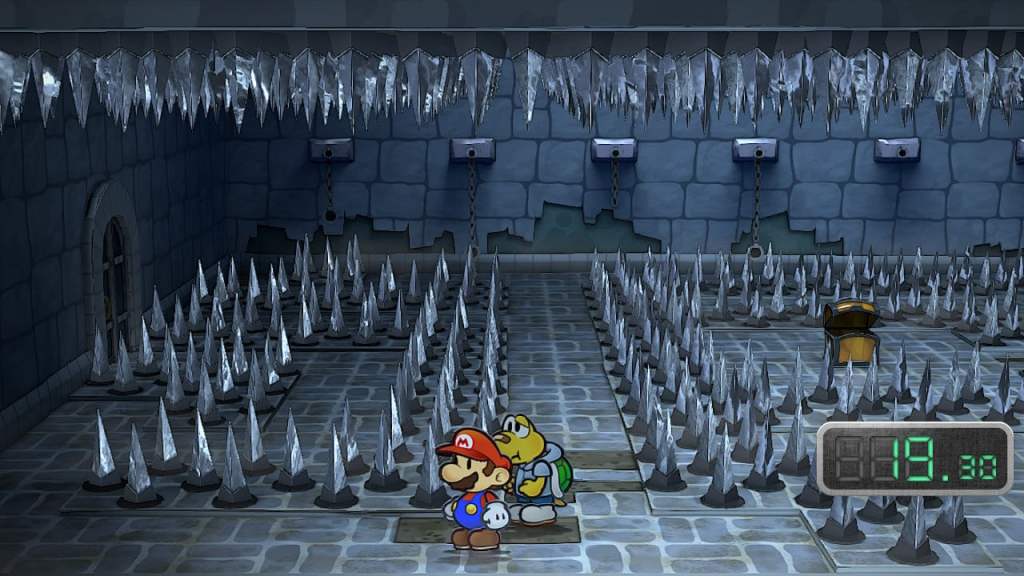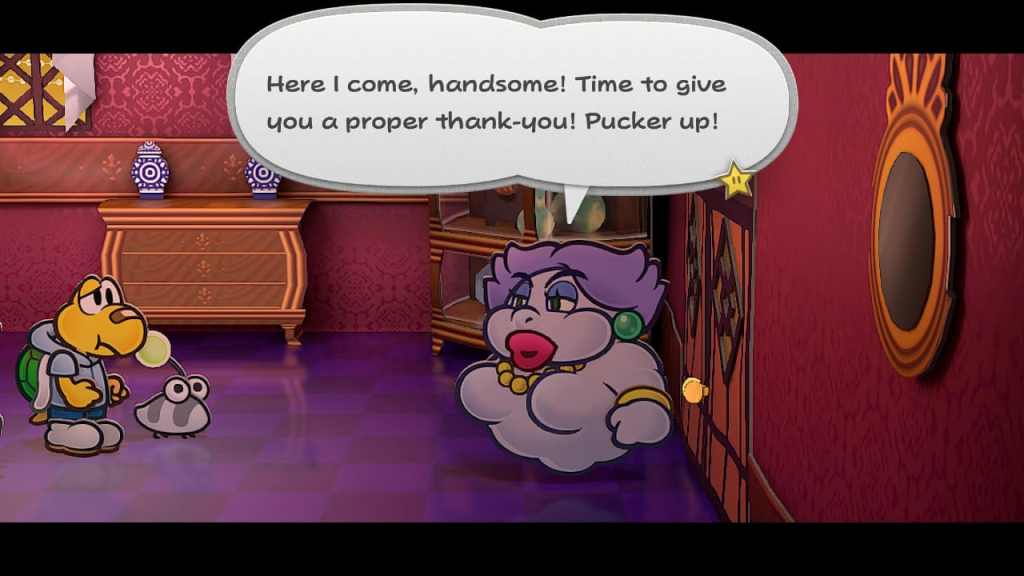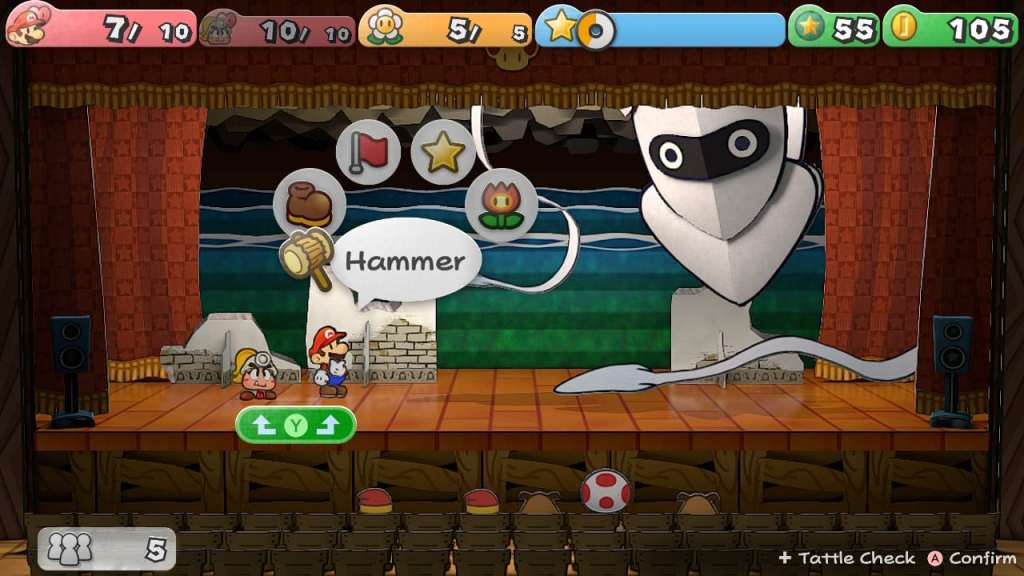Paper Mario: The Thousand-Year Door is a game I missed during its original life cycle. Three chapters in, the game’s remaster for
There are rumours the
What is most compelling about the Paper Mario: The Thousand-Year Door remaster is the game’s art style. Flat 2D characters move through 3D papercraft environments, each location brimming with a neat charm and style. There’s novelty in the game’s approach to exploration – hit a special block, and paper will “fold in” a bridge to cross. In some locations, Mario must fold himself into a paper airplane to cross a large gap. Eventually, Mario gains the ability to turn sideways, and you can venture into small cracks between rocks and fences.
It’s not only Paper Mario in name. It’s a game that wields its paper-theming in frequently clever ways, tasking you with thinking deeply about your environment, and how to solve puzzles in a 2D/3D plane. I was particularly enamoured with my journey through Hooktail Castle, which is filled with various puzzle blocks. To make your way through unscathed, you need to use the shell abilities of your companion Koops to best time, leap, and jump your way up the castle.
Read: Super Mario RPG Review – Wish upon a classic star
Then, when you get to the top, there’s even more novel surprises waiting for you – like spikes dangling from the ceiling, and a maze at your feet.

Wandering off the beaten path, you’ll also find a range of other quirks in the adventure. I’ve quite enjoyed meeting and greeting a range of citizens in and around Rogueport, the central hub of Paper Mario: The Thousand-Year Door. Each has their own personality, and will give you flavourful dialogue about their place in Rogueport, their fears, and their funny little jokes.
Tonally, the game is a delight. You’ll be traversing castles to battle dragons, facing down shadow-witches, dealing with a kidnapping, and finding rogues in the sewers – but the adventure is played out with a lovely sense of whimsy. Characters are frequently blasé in circumstances where they absolutely shouldn’t be, creating a real sense of tongue-in-cheek dissonance.
For a game originally targeted at kids (and arguably now for older players), there’s a real sense of darkness and maturity in this humour. Even certain characters like Madame Flurrie, with her heaving cloud bosom and plush lips, push the edges of what’s “acceptable” in a kid’s game, adding to that hilarious dissonance.

As far as I can tell, everything that was in the original Paper Mario: The Thousand-Year Door remains in this remaster. While that means some of the humour has aged a little badly, it does mean the game is a neat reflection of early 2000s culture and gaming trends. The purists will likely also appreciate that it’s largely been unchanged.
That applies to the game’s adventuring and combat systems too, which remain fun, snappy, and strategy-based. In Paper Mario: The Thousand-Year Door, battles play out in a theatre setting. You and one of your companions joins you on stage, and you must deploy a range of attacks, using good timing to ensure your bounces or hammer swings are landing, and causing the most impact.
While basic in nature, this turn-based combat remains fun and colourful, with neat theming and simple deployment allowing for hard-hitting, engaging battles. For those familiar with the recent Super Mario RPG remake, you can expect a similar system – but one with a fresh dose of creativity and fun on top (particularly in boss battles).

Three chapters in, there’s so much to be impressed by, particularly as a newcomer to Paper Mario: The Thousand-Year Door. Those revisiting the game will likely enjoy the nostalgia of the adventure, and that it’s been preserved in such loving fashion. For those with zero experience of the original adventure, this remaser serves as a great opportunity to experience one of Mario’s most acclaimed titles, with neat modern tweaks.
So far, the Paper Mario: The Thousand-Year Door remaster is already shaping up to be a triumph. While it arrives late in the
Paper Mario: The Thousand-Year Door launches for
GamesHub has affiliate partnerships. These do not influence editorial content. GamesHub may earn a small percentage of commission for products purchased via affiliate links.





